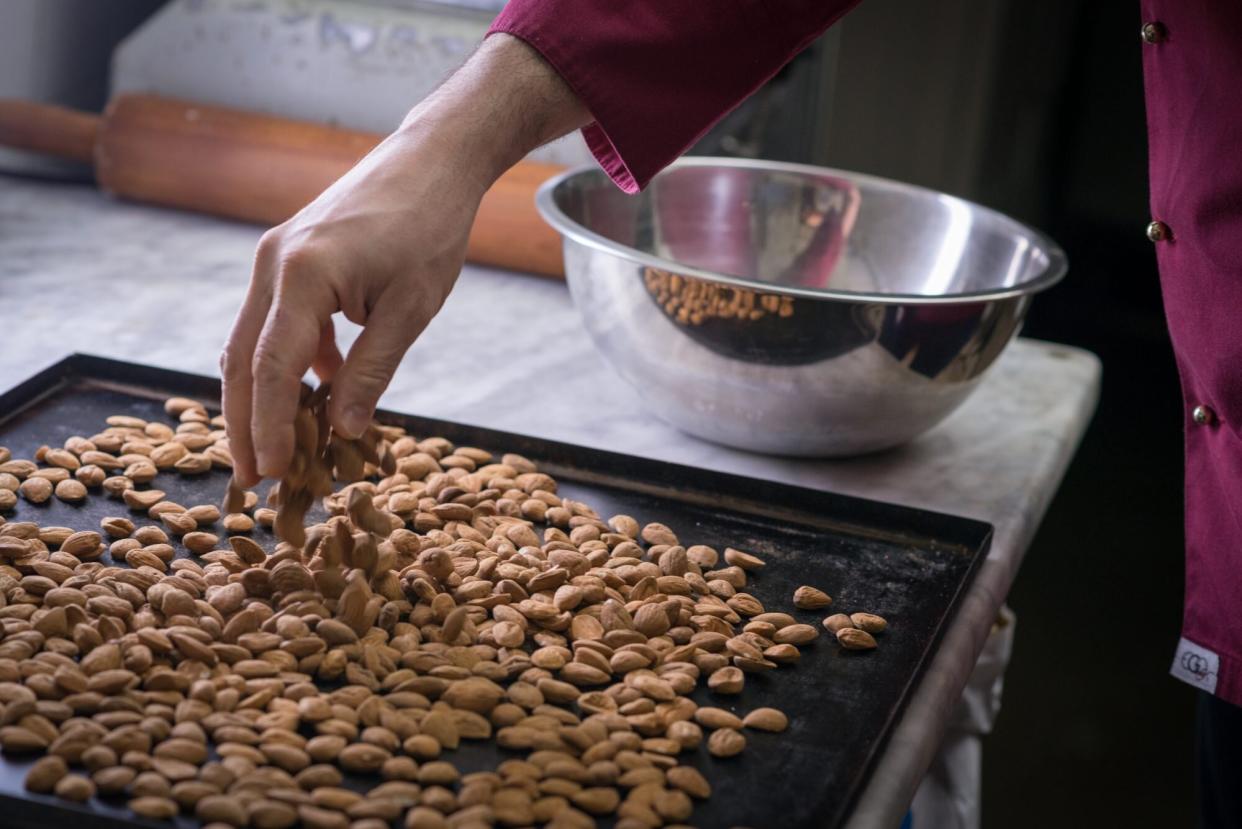How to Toast Nuts

ilbusca/Getty Images
Raw nuts make quick, convenient, and healthy snacks but, when it comes to baking pies and cakes, garnishing salads, stirring into pasta bowls or chilled yogurt, toasting the nuts adds extra flavor and interesting texture. This simple cooking technique does not require fancy equipment or extra ingredients and takes about 5 minutes (unless you are roasting chestnuts) to perform; the end result is well worth the effort.
Get Started
Begin with whole, raw nuts. If your recipe calls for toasted chopped nuts, roast them whole, if possible. Chopped bits will cook unevenly, due to the differing sizes, and some pieces will likely burn. Just a few burned bits can ruin your entire batch. Slivered and sliced almonds are an exception to this rule, however, since both are typically consistently-sized.
Line a large baking sheet with aluminum foil or parchment paper; you can use a bare baking sheet but lining the pan aides in cleanup. There is no need to use oil in a pan or on the baking sheet when toasting plain nuts. It may alter the flavor of the nut as well as how it reacts in a recipe. If toasting nuts for a spiced snack mix, however, your recipe may tell you to use oil.
Lastly, low and slow heat is the way to a perfectly toasted nut. If your oven or stovetop is too hot, the nuts will quickly burn instead of slowly toast, so always remember to keep the heat on the low end of the scale.
Test for Doneness
Most nuts will start emitting a pleasant fragrance after only a few minutes of toasting. By the time you notice the smell, the nuts are almost ready and you should start checking for doneness. When chopped, a perfectly toasted nut will not be fully browned throughout. You only need a thin layer of golden toasty-ness around the outside edges to enhance the nut's flavor and texture. You can continue to toast the nuts, but remember that the longer a nut toasts, the more its flavor will overshadow the dish.
Toasting in the Oven
Preheat the oven to 325°F. Spread the nuts in a single layer on your baking sheet; don't crowd or assemble them too close together. Put the baking sheet in the oven and bake until the nuts are fragrant and slightly browned, about 5–8 minutes, depending on the size and type of the nut. The nuts closest to the hot spots in your oven or on the edges of the pan will usually cook faster, so stir the nuts every 2 minutes or so.
Toasting on the Stovetop
If your oven is already in use with other dishes, you only need to toast a small amount of nuts, or it is simply too hot outside to heat up the kitchen, you can toast nuts on the stovetop. Choose a stainless steel skillet that can hold the nuts without crowding them, and set over medium-low heat. Add the nuts and spread them out into a single layer. Cook, stirring often, until the nuts are fragrant and evenly, lightly toasted, about 3–6 minutes depending on the size and type of the nut.
A word of caution: Never walk away from the stove while toasting nuts on the stovetop. The nuts can go from raw to burned in mere seconds.
Store Toasted Nuts Properly
Once the nuts have reached the desired degree of toasty-ness, immediately transfer them to a, heat-resistant bowl or container. If left on a hot pan or skillet, they will continue to cook and possibly burn. For most purposes, you will want the nuts to cool down before using them in a dish, so spread them out in a single layer on a cool surface to speed up the process.
If you're not using the toasted nuts right away, let them cool completely, then transfer to an airtight container and store at room temperature for up to 2 weeks. You can even freeze them up to four months in zipper-lock freezer bags.

